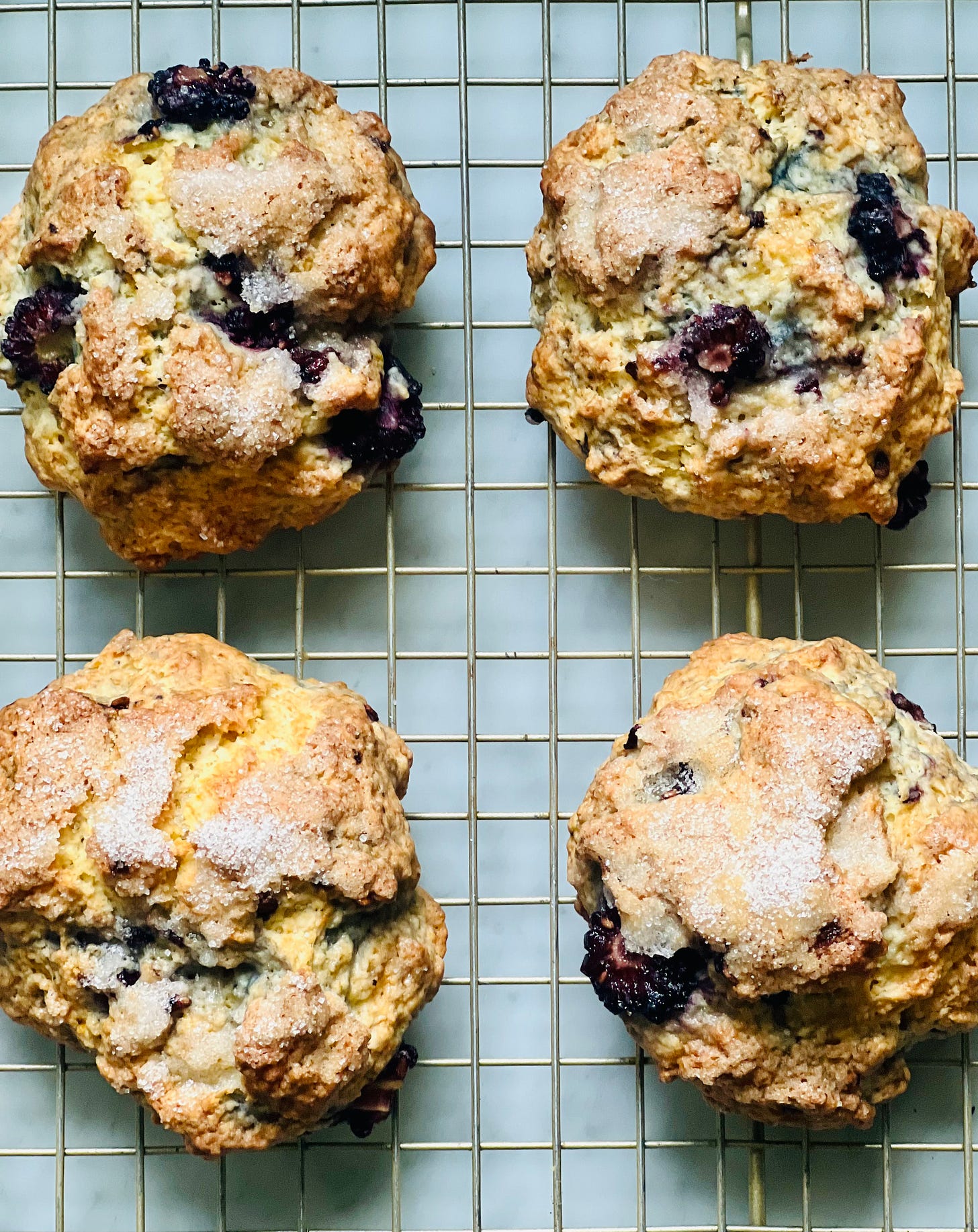Have It Your Way Homemade Scones - No. 186
Whether gluten-free, vegan, or budget-friendly, how to bake orange-scented drop scones to please your pantry, diet or sudden cravings.
AS I FLIPPED THROUGH COOKBOOKS in the David Walker Lupton African American cookbook collection at the University of Alabama last August, I stopped at Eggless Batter Cakes in the Fisk Club Cookbook, published in 1912.
You combine 1 1/2 cups flour, a heaping teaspoon sugar, 1/2 cup cornmeal, and a teaspoon salt. Then enough sour milk (or buttermilk) for a …



